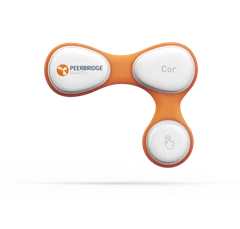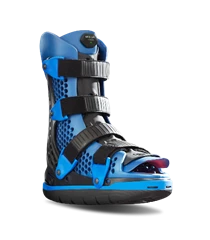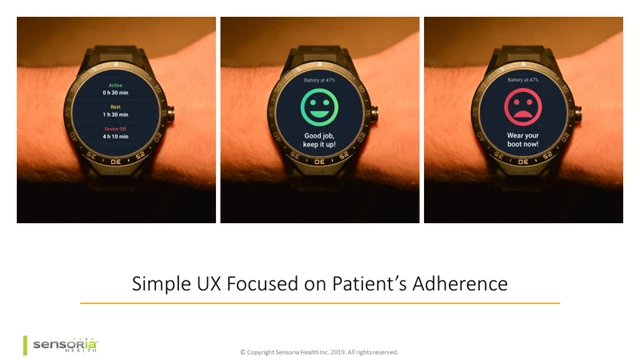Azure IoT Central, Industry trends, Internet of Things
IoT sensors and wearables revolutionize patient care
Posted on
4 min read
When was the last time you or a loved one went to the doctor or hospital? Things have changed dramatically over the last few years, with kiosks to register, portals to track your health history, and texts reminding you about upcoming appointments.
These changes have made a difference in how we interact with our healthcare providers. But there are more changes, not on the horizon, but here today. It is estimated as many as 50 billion medical devices will connect to clinicians, health systems, patients, and to each other.
Cardiac patient monitoring improvements
Imagine that you or a family member have periodic symptoms of irregular heartbeats, an all too common medical disorder known as an arrhythmia. If persistent, an arrhythmia can cause blood to clot in the heart, significantly increasing the risk of a heart attack or stroke. If caught early, a clot or blockage can be contained or cleared away and stent can be put in to keep blood flowing normally. In the US, more than 1.8 million stents are implanted annually, along with countless other preventative cardiac procedures to treat the 28.2 million US adults with diagnosed heart disease. Following any cardiac related procedure, a patient is typically counseled about the importance of exercise and nutrition then sent home. Post procedure, it’s common to be concerned about another cardiac related event in the immediate days following discharge, but what if the patient could be proactive, as well as reactive, to cardiac disease?
Peerbridge Health, a New York-based remote patient monitoring company has developed the Peerbridge  Cor™ (Cor), an award-winning, multi-channel wearable electrocardiogram (ECG) to better assist physicians and their patients detect and treat irregular heart activity, expeditiously. Prescribed by a cardiologist, the Cor is an elegant wearable worn 24 hours a day for up to 7 days with the ability to record every single heartbeat. In the event of abnormal cardiac activity, the patient can transmit select ECG activity to the prescribing physician’s care team for analysis at the press of a button. This continuous recording with transmitted events provides an unparalleled “window” into the patient’s heart activity as they go about their daily activities. Finally, an ECG monitoring solution providing critical data transmission patient’s expect with modern medicine.
Cor™ (Cor), an award-winning, multi-channel wearable electrocardiogram (ECG) to better assist physicians and their patients detect and treat irregular heart activity, expeditiously. Prescribed by a cardiologist, the Cor is an elegant wearable worn 24 hours a day for up to 7 days with the ability to record every single heartbeat. In the event of abnormal cardiac activity, the patient can transmit select ECG activity to the prescribing physician’s care team for analysis at the press of a button. This continuous recording with transmitted events provides an unparalleled “window” into the patient’s heart activity as they go about their daily activities. Finally, an ECG monitoring solution providing critical data transmission patient’s expect with modern medicine.
Frustrated by all the wires in the hospital, Peerbridge Health was founded by Dr. Angelo Acquista when he was caring for his father in the ECU in 2006. Instead of getting up and walking around, his father was covered in wires and sensors unable to move, like most cardiac patients. Shortly after this experience, Dr. Acquista started Peerbridge Health, determined to change how this chronic disease is managed. Today, Peerbridge is a leading-edge manufacturer of the Peerbridge Cor (pictured above), the smallest and lightest FDA-cleared, multi-channel, wireless ECG.
The Peerbridge team selected Microsoft’s Azure IoT platform for their cardiac monitor because they, “saw the Microsoft IoT platform as being a foundational ingredient to help them grow and scale.” Peerbridge CEO, Adrian Gilmore states, “Azure IoT not only provides the secure data stream that is needed to monitor patients, it also offers cloud tools enabling us to present data in formats physicians expect, making the entire system a real revolution in cardiac care.” He continued, “Our engagement at the Microsoft AI and IoT Insider Lab, was the perfect opportunity for us to sharpen our team’s digital strategy, ensuring we optimize the company’s cloud architecture, and take full advantage of the variety of data services Microsoft offers.”
Avoiding diabetic amputations
Another company, Sensoria Health, a Seattle-based company, has taken on the problem of diabetes-related amputations. Why diabetes? Well, the statistics from the American Podiatric Medical Association are staggering:
- More than 400 million people have diabetes worldwide
- 32 million people in the US have diabetes, costing more than 327 billion dollars
- In the world today, a lower limb is lost to diabetes every 20 seconds
- Cost in the US is estimated to be about 20 billion dollars
The typical progression to the amputation of a toe, foot, or more, always begins with a foot ulcer. The  team at Sensoria asked themselves, “What can be done to expedite the healing of foot wounds to avoid amputations?” In response, Sensoria joined forces Optima to develop the Motus Smart powered by Sensoria®. It combines Sensoria® Core technologies, together with the clinically-tested Optima Molliter Offloading System, to take the pressure off the area of ulceration to improve blood circulation which is a critical factor to improve chance of healing.
team at Sensoria asked themselves, “What can be done to expedite the healing of foot wounds to avoid amputations?” In response, Sensoria joined forces Optima to develop the Motus Smart powered by Sensoria®. It combines Sensoria® Core technologies, together with the clinically-tested Optima Molliter Offloading System, to take the pressure off the area of ulceration to improve blood circulation which is a critical factor to improve chance of healing.
Originally unveiled at the Consumer Electronics Show in January 2018, where it won Innovation Honoree Award, the Motus Smart, leverages Sensoria® Core to monitor activity and compliance, and is a clinically-proven and viable alternative to a total contact cast, and non-removable cam boot. The Sensoria® sensors work with a real-time app and alert system and an Azure based dashboard to inform patients, caregivers, and clinicians of non-compliant patients, allowing for easy and immediate intervention. The expensive and uncomfortable cast finally has an IoT, viable, and clinically-proven alternative with Motus Smart.

Why did Sensoria choose Microsoft’s Azure IoT platform for their patient monitoring devices? Davide Vigano, co-founder and CEO of Sensoria, shares in this video the three reasons why they selected Azure:
- The richness of the development tools and already knowing how to use them
- The openness of the platform and ability to use open source
- Microsoft’s understanding and command of the enterprise market segment
Furthermore, Sensoria is using the Microsoft cloud and the Azure IoT platform to build a connected medical device platform, as they continue to develop new patient monitoring devices, like their smart sock v2.0 and Sensoria® Core, that drive improved outcomes for a variety of conditions.
Learn more
Want to learn more about Microsoft and our work in healthcare? Check out our healthcare microsite, detailing our approach to the cloud and security, as well as compelling customer stories from Ochsner Health, BD, and others.